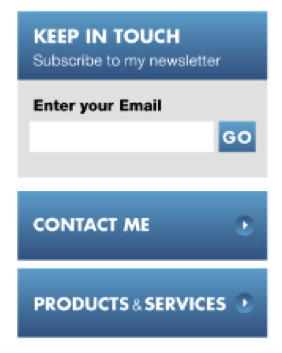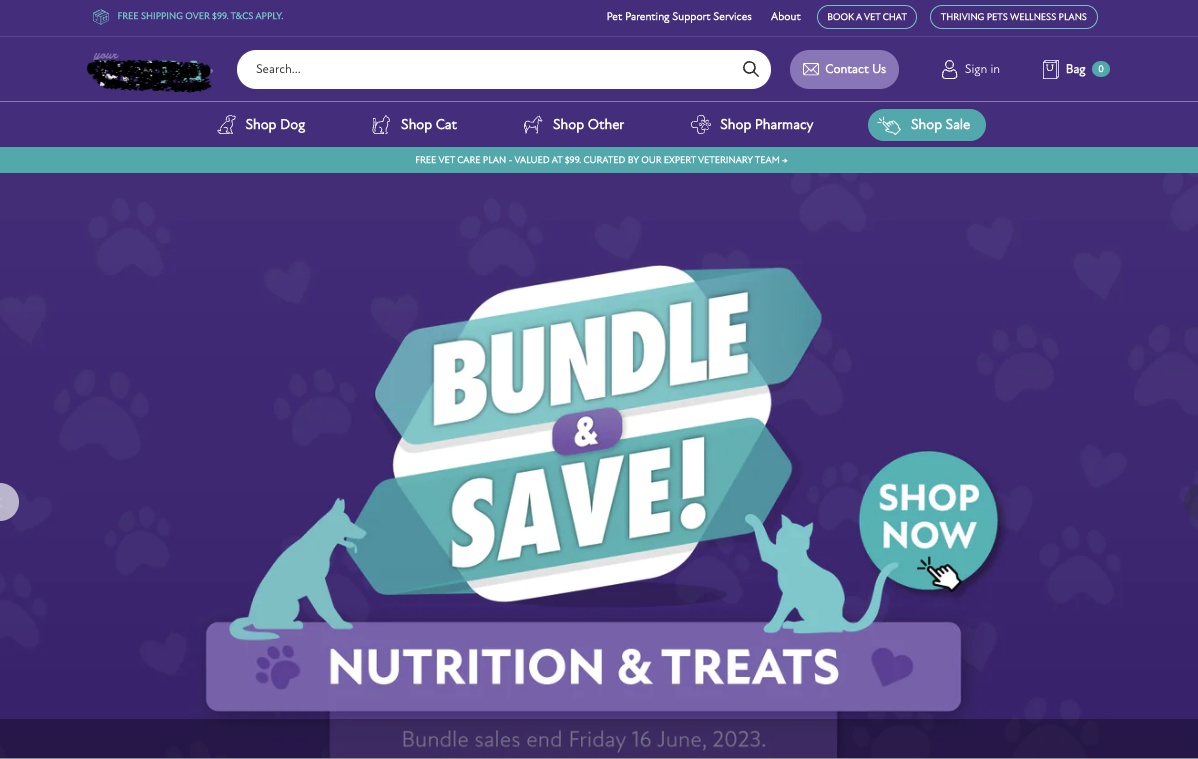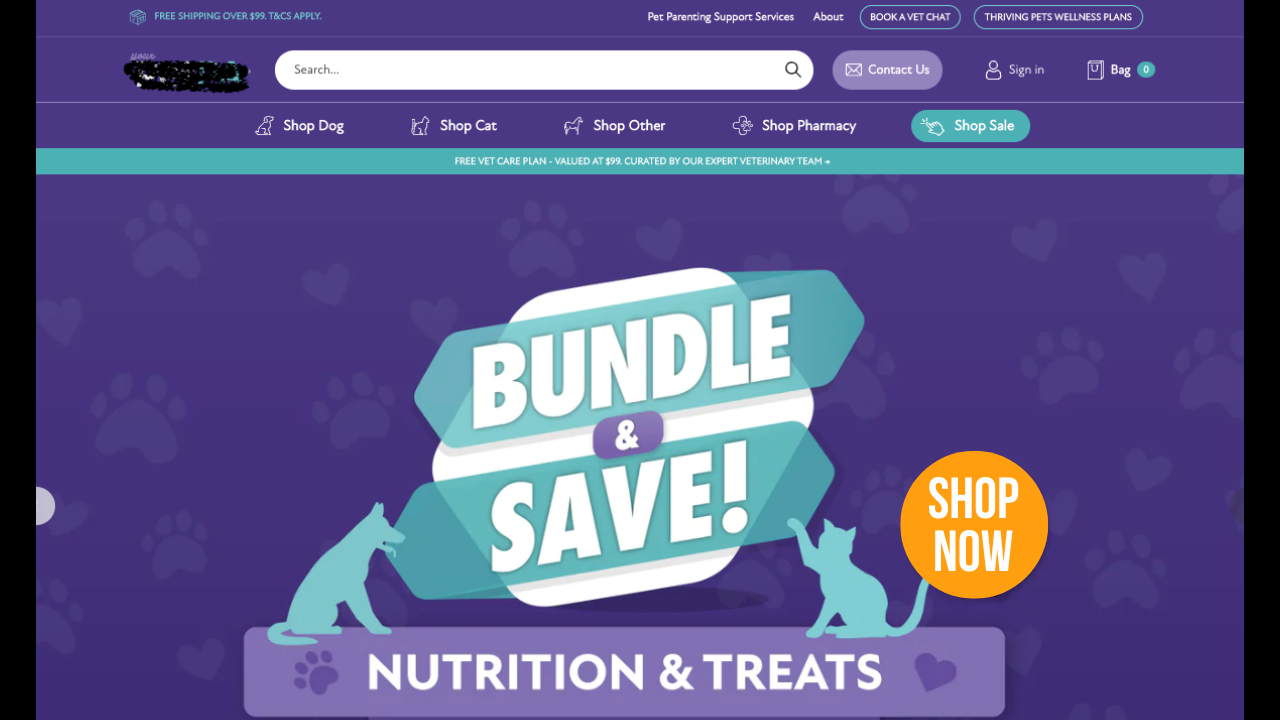Don't do this
When it comes to influencing behaviour of customers and colleagues, there are a lot of things you can do. But there’s also a lot of things you shouldn’t do.
1. Don’t make things pretty, make them effective
Too many businesses prioritise aesthetic over efficacy.
For example, websites with call-to-action buttons that match their brand. I get it! Brand guidelines are important. We want our businesses to look well considered and professional.
The problem when everything matches is that nothing stands out. I learnt this lesson early when I first launched my business People Patterns.
My logo is blue so my web designer made all the buttons blue. Pretty? Yes. Effective? No.

And here’s an example of that from a pet supply company. See how everything matches? This makes it difficult for us to know where to click.

Now imagine they used a complementary buy contrasting colour. Easier to know where to click now?

The principle here is salience. We want to make sure the right thing stands out.
Whether it’s websites, Apps, brochures, emails, invoices or presentations, attract your customer’s attention to the key message or action - don’t bury it amongst your other content.
Number two on our list of things you shouldn’t do?
2. Don’t normalise inaction, normalise action
There’s a tendency to want to shame people into taking action. For example, telling people they are not eating enough vegetables:

The problem is when we use stats that inadvertently normalise inaction. In this case, 97% of Australians don’t eat enough vegetables. Great! If no one else is then I won’t either!
Instead seek to normalise the desired action. And hey, if the desired action isn’t yet the societal norm, then you’ll need to devise a different way of persuading us to get on board.
Lexus do this with their “Be No One Else” campaign that celebrates social status in not following the herd.
Now, the third thing not to do?
3. Don’t ask why, ask what.
Asking why stimulates us to reason - to attempt to make sense of things. We naturally justify and rationalise our behaviour.
And we ask ‘why’ questions all the time! Why did you buy that? Why would you go to that shop rather than ours? Why didn’t you complete that survey?
The problem is that these reasons may not in fact be the actual reason we did something.
For example, I may believe I bought French wine at the bottle shop because I like its pedigree when in fact I was drawn to the French wine because French music was playing in the background.
I might tell you I work hard because the bonuses are great, but what really lifts my performance is you supporting me and acknowledging my efforts.
I might tell you I bought my car because it has a great safety rating, but really it’s because all my neighbours were getting new cars.
When we are trying to design to influence behaviour, the ‘why’ can lead us to answer problems that may not actually be relevant.
So as much as possible, be interested in what rather than why. Ask ‘What did you do?’ and ‘What were you doing right before that?’, for example.
That will help you understand the role context plays in how decisions are made, and context is something you as a business can play a role in shaping.
You might also find interesting:
- Just Do This - Bri's online program that shows you exactly how to apply behavioural science to your business
- Why asking customers can lead you astray
- Five myths about behaviour and why they won't go away

